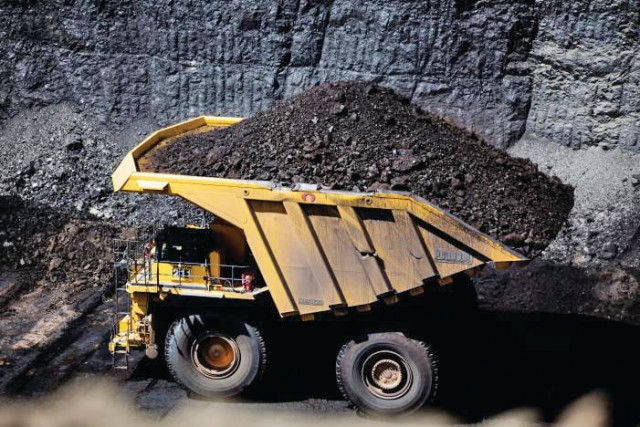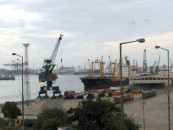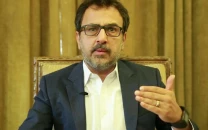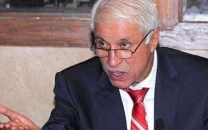Thar coal - too little, too late
In most countries, coal production may be phased out by 2050

Prime Minister Imran Khan has recently announced that there will be no more coal-based power plants in Pakistan.
International climate lobbies have welcomed the statement but domestic energy circles or at least parts of them are not happy. Many people believe that Pakistan’s carbon footprint is too little and say we have vast coal reserves in Thar, which we have only begun to exploit and a lot needs to be done in this respect.
The statement may be corrected or adjusted in coming days on technical advice from other parts of the government. It appears that, under a misguided enthusiasm of our climate lobby and the ministry, the PM made the statement under international pressure against coal.
But there is a background to it as well – mounting circular debt of Rs2.3 trillion and high cost of power generation, of which coal including Thar coal is a major part. Had there been earnings and savings, he may have had some hesitation.
We will elaborate in this space on three aspects of Thar coal – too little, too late and too expensive. Coal, admittedly, is a dirty fuel and contributes to the carbon footprint. On the other hand, even to date, coal is generating more than 33% of electricity around the world.
Both our friend China and foe India are the two largest producers and consumers of coal. But both have announced they will reduce their reliance on coal.
China plans to reduce it from 70% to 50% in 2025. Similar statements have emanated from the Indian side. India’s large solar and wind power plans somehow support this.
UN secretary general has recently made the following statement: There must be no new coal and all existing coal in the EU should be phased out by 2030 and elsewhere by 2040. He has urged that all coal financing must end. It appears that in most coal-committed countries, coal will be phased out by 2050.
Production cost
Indeed, we have started late on coal. India started with its lignite in the 1950s and its Thar lignite in 1970. Pakistan ignored and delayed Thar coal and finally agreed on an expensive proposal after rejecting a cheaper offer from China.
The same Chinese company has agreed recently to cooperate in building a coal-to-diesel plant under the CPEC framework. Current production cost of Thar coal is $61 per ton, more than twice the international cost of similar coal under comparable geological and mining conditions like stripping ratio, water and chemical composition.
Similarly, Thar coal-based electricity is 40% expensive than elsewhere and equals in cost with imported coal-power plants, which produce at 8.5 US cents per kilowatt-hour (kWh). Problems are not in Thar coal itself. It is as good as its counterparts elsewhere in the world in terms of properties. The problem has been in management and policy.
High capital expenditure, zero equity syndrome, high interest rates and unseen return on equity (ROE) of 20% have led to the excessive cost. Unless and until these are corrected, Thar coal can never become competitive. All recent studies have demanded this.
A Chinese team has recently submitted its report, recommending reduction in Thar coal cost by 50% if coal-to-diesel production has to be made viable. Locally, Hub Power has made similar demands for conversion of its oil-based power plant into Thar coal. Infant industry support argument does not apply. Indians are producing electricity from the same coal at half the cost and similar volumes, across the border a few hundred kilometres away.
Nothing extraordinary has been done. Mining projects are undertaken in far-off places like Thar and not in urban neighbourhoods. Thus, all the arguments defending high cost do not stay the test of scientific inquiry. Had Thar coal been produced at a reasonable cost, it would have been received with much more enthusiasm and optimism.
Now, solar power has come with 2 US cents per kWh and storage cost falling by the day. In the medium term, solar will not cost more than 4 cents including storage cost. This will further dilute the attractiveness of Thar coal.
Already, there are people heavily in favour of solar power as opposed to any other form of energy. Solar energy may even push hydroelectric power behind, if distributed generation catches on and storage issues are resolved. Thus, Thar coal is late in the day. We started too little as well. We have 3,300 megawatts of imported coal-based capacity installed recently and more imported capacity in the pipeline. Sindh government, initially, wasted time in power tussle and then manoeuvred to get an unreasonable ROE of 20%. The Sindh government is a partner with 51% equity in the SECMC project.
Greenhouse gases
The world order is committed to reducing the carbon footprint. Pakistan is going to be among seven countries with worst consequences, although its contribution to greenhouse gases is minimal due to a very low degree of development, besides we have social issues of hunger and poverty.
World may be giving us some consideration but not a lot and not too far in time. We are too much dependent on international order and support.
We have a highly dependent and unsustainable economy. Despite remittances of $20 billion (based on poor labourers’ toil), we are perpetually in current account deficit and have to frequently knock at the IMF’s door. It would be very difficult to defy the world order and policies. The least that can be expected is trade restrictions, taxation and incentives.
There are other issues and difficulties in Thar coal transport, water requirement and transmission of electricity to far-off places where there is demand.
Pakistan is destined to become a water-stressed country, which is the last category in water resource classification. Pakistan would have to be careful in the choice of water-consuming technologies and even crops like sugarcane and rice. Thus, there are multi-dimensional aspects which should be kept in mind. I am sure bureaucracy would be working on the right elaboration of PM’s statement. So as not to apply to the planned (20,000MW) or/and under-implementation projects (8,000MW).
Another possible adjustment may be that the statement wouldn’t apply to coal gasification, which is partially clean. It appears that coal (Thar)-based capacity may not be able to go beyond 8,000-20,000MW.
To those who like coal and love Thar coal and are associated with it in some way, my suggestion would be to correct the inadequacies that have been indicated in the foregoing and bring in competition and efficiency.
The tragedy is that Thar has estimated reserves of 185 billion tons of coal that will last for centuries and too little of it would be exploited.
World has been using coal for the last two centuries. But this is going to be the fate in most countries which have more coal resources than we have – the US, China, India, Australia – and of better quality than our lignite.
We have abundant alternative energy resources as well – solar, wind and other bio-resources. Skies would not cry, if Thar coal is not utilised to the full.
The writer is former member energy of the Planning Commission
Published in The Express Tribune, January 11th, 2021.
Like Business on Facebook, follow @TribuneBiz on Twitter to stay informed and join in the conversation.


















COMMENTS
Comments are moderated and generally will be posted if they are on-topic and not abusive.
For more information, please see our Comments FAQ